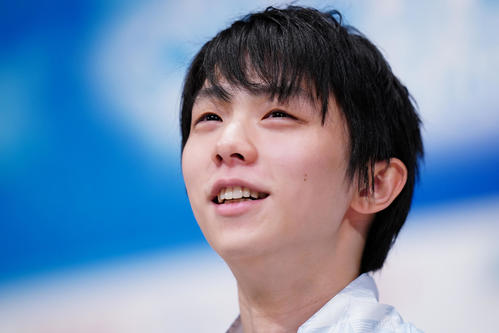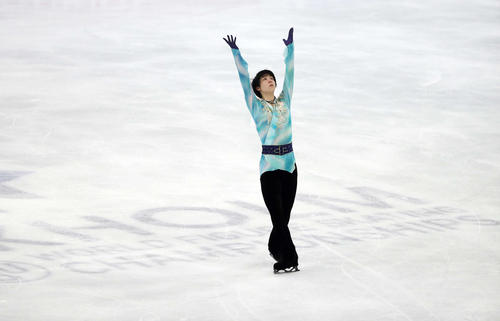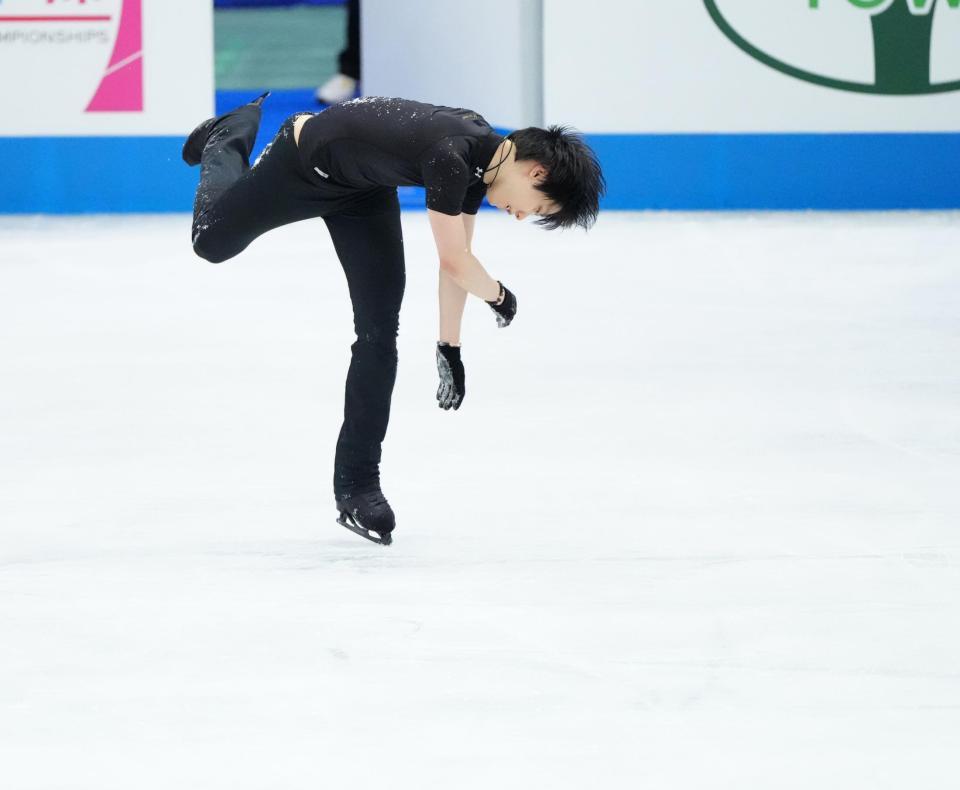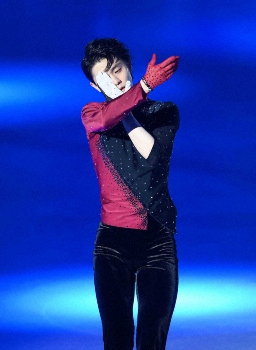Hanyu’s long program represents the Battle of Kawanakajima, which took place in 1561 between two feudal lords, Uesugi Kenshin and Takeda Shingen, who fought for control of a plain in the Shinaro province that is part of the present-day city of Nagano.
“The beginning of the piece was Shae’s idea. I imagine that I am fighting and my front arm is the armour of a samurai,” Hanyu explained about his opening pose. “I used the title of the taiga drama ‘Ten to Chi to’ (a long running Japanese television series). But for me, it is ‘Ten to chi no hito’ (a man between heaven and earth). My arm is the transition between where I am, and the sky above and the earth below.
“Then the part with the Biwa (a Japanese short-necked lute) begins. This was part of the actual piece of music. It symbolizes that I actually don’t want to fight, but have to in order to protect my loved ones.
“The song is full of determination, like I am going to fight, or filled with a sense of preparing for battle. At the end, after the Ina Bauer, the Biwa sound while I am spinning is one I included from a different piece of music and layered it to make it original. I wanted to incorporate typical Japanese elements with traditional instruments and the Biwa was best suited for this.”
Hanyu also added a koto (a 13-stringed harp-like instrument) because he wanted to make the program even more ‘Japonesque.’ “I developed many different versions of the piece, but since I’m not a professional musician, I just adapted it to the step sequences and the choreography. The way Kenshin fought and his philosophy touched me deeply. My situation is similar and I could identify with him. Fighting and still not winning you can say is painful, so I am somewhat influenced by Kenshin’s overall sense of values about battles.

japan-forward.com


 :
:


 and also quite unsurprising...
and also quite unsurprising...


 I mean that in a good way mostly (although I do worry about him spending hours on quad Axels).
I mean that in a good way mostly (although I do worry about him spending hours on quad Axels). 




